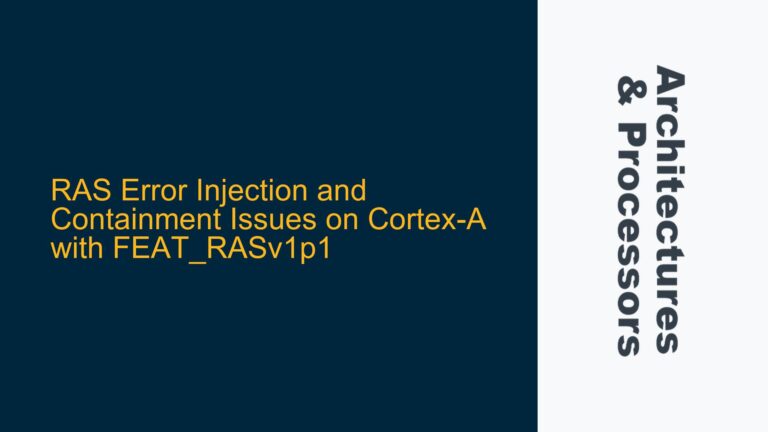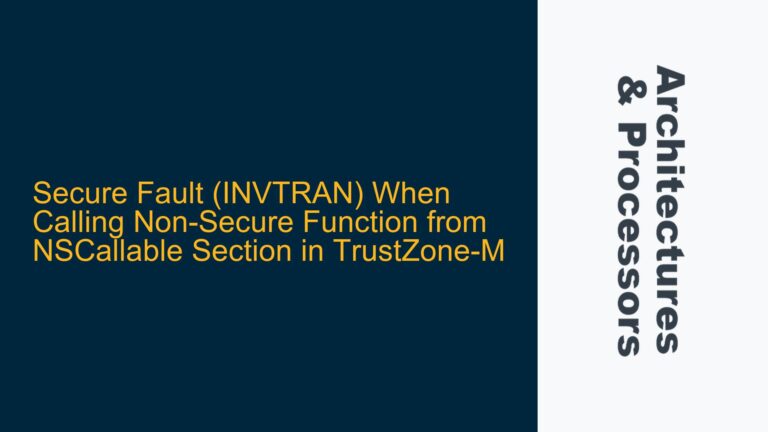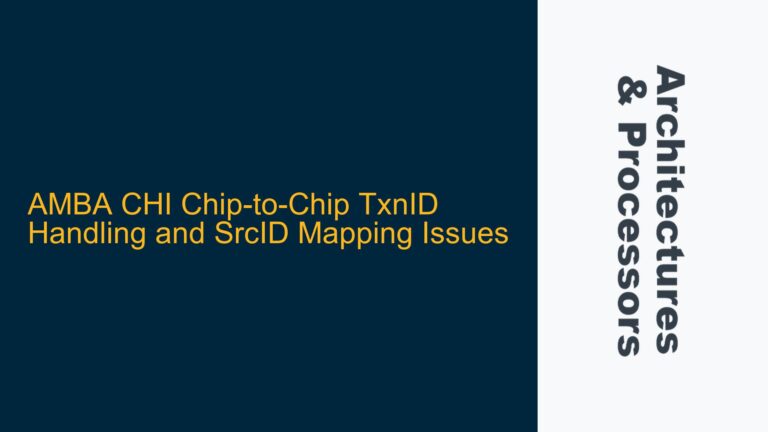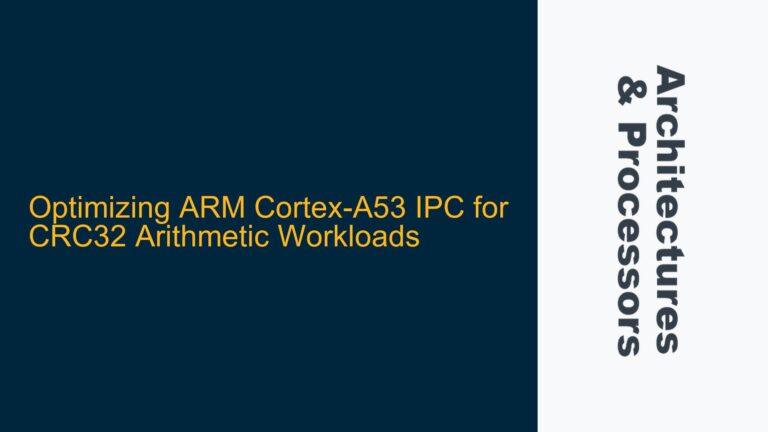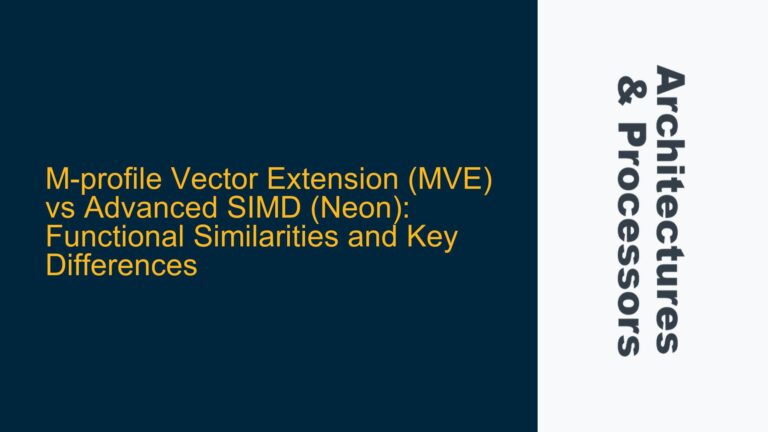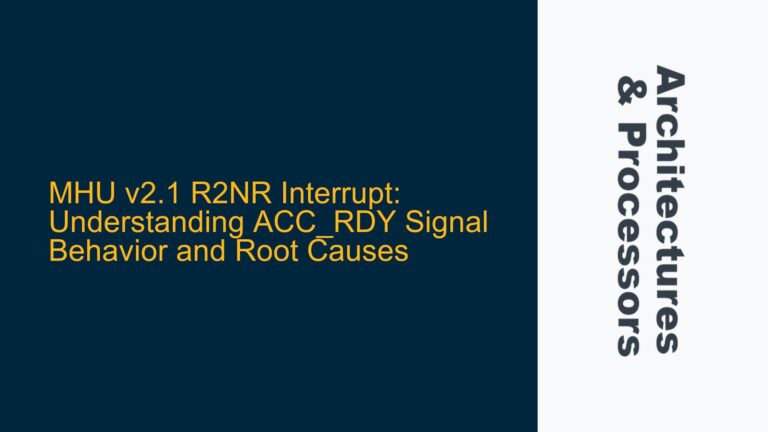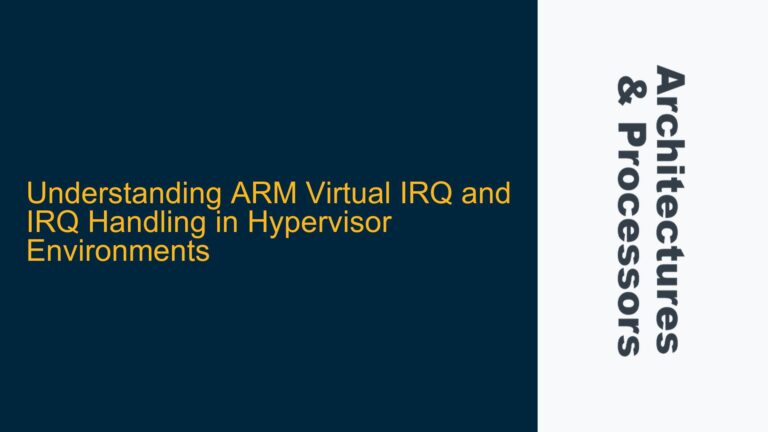RAS Error Injection and Containment Issues on Cortex-A with FEAT_RASv1p1
ARM Cortex-A RAS Error Injection: SError Exception Not Triggering for CE/DE Errors The ARM Cortex-A architecture, particularly when utilizing the FEAT_RASv1p1 (Reliability, Availability, and Serviceability) extension, provides mechanisms for error injection and containment. However, a common issue arises when attempting to inject Corrected Errors (CE) and Deferred Errors (DE) using the Pseudo-fault Generation Control Register…
